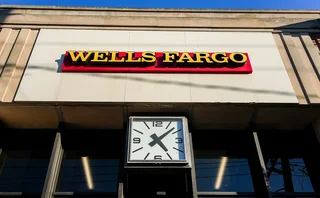
360T is second venue to demand FX code compliance
GFXC urges other platforms to follow suit, potentially making code adoption an entry ticket to FX markets

360T will bar liquidity providers that have not signed the most recent version of the FX Global Code from making markets on its anonymous foreign exchange trading platform, echoing a move made by rival venue Cboe FX earlier this month.
The platforms’ policies are one answer to a long-standing question about how the code can be given teeth. Some critics have argued the market’s voluntary standards will ultimately have to be enforced via regulation.
Simon Jones, chief growth officer at 360T
Only users who have a paid subscription or are part of a corporate subscription are able to print or copy content.
To access these options, along with all other subscription benefits, please contact info@risk.net or view our subscription options here: http://subscriptions.risk.net/subscribe
You are currently unable to print this content. Please contact info@risk.net to find out more.
You are currently unable to copy this content. Please contact info@risk.net to find out more.
Copyright Infopro Digital Limited. All rights reserved.
As outlined in our terms and conditions, https://www.infopro-digital.com/terms-and-conditions/subscriptions/ (point 2.4), printing is limited to a single copy.
If you would like to purchase additional rights please email info@risk.net
Copyright Infopro Digital Limited. All rights reserved.
You may share this content using our article tools. As outlined in our terms and conditions, https://www.infopro-digital.com/terms-and-conditions/subscriptions/ (clause 2.4), an Authorised User may only make one copy of the materials for their own personal use. You must also comply with the restrictions in clause 2.5.
If you would like to purchase additional rights please email info@risk.net
More on Markets
What drove the Taiwan dollar surge?
Foreign speculators, carry unwinds and central bank inaction fuelled the 10% move, not just life insurers, say traders
Novel risk-off CTA strategy passes tariff test
Ai for Alpha’s defensive approach to trend following worked as planned in April turmoil
European investors ramp up FX hedging as ‘dollar smile’ fades
Analysts at one bank expect average hedge ratios to jump from 39% to 70% within six months
CLO market shakes off ETF outflows
Despite record redemptions, exchange mechanics and relatively small volumes cushioned impact
Pension funds hesitate over BoE’s buy-side repo facility
Reduced leveraged and documentation ‘faff’ curb appetite for central bank’s gilt liquidity lifeline
Wells Fargo’s FX strategy wins over buy-side clients
Counterparty Radar: Life insurers looked west for liquidity after November’s US presidential election
How BrokerTec, MarketAxess fared during Treasury rout
Electronic bond trading platforms see spike in volumes and small growth in market share, Risk.net analysis shows
Tariff volatility pushes banks to tighten close-outs
Lawyers say dealers are looking to update playbooks for terminating derivatives trades







